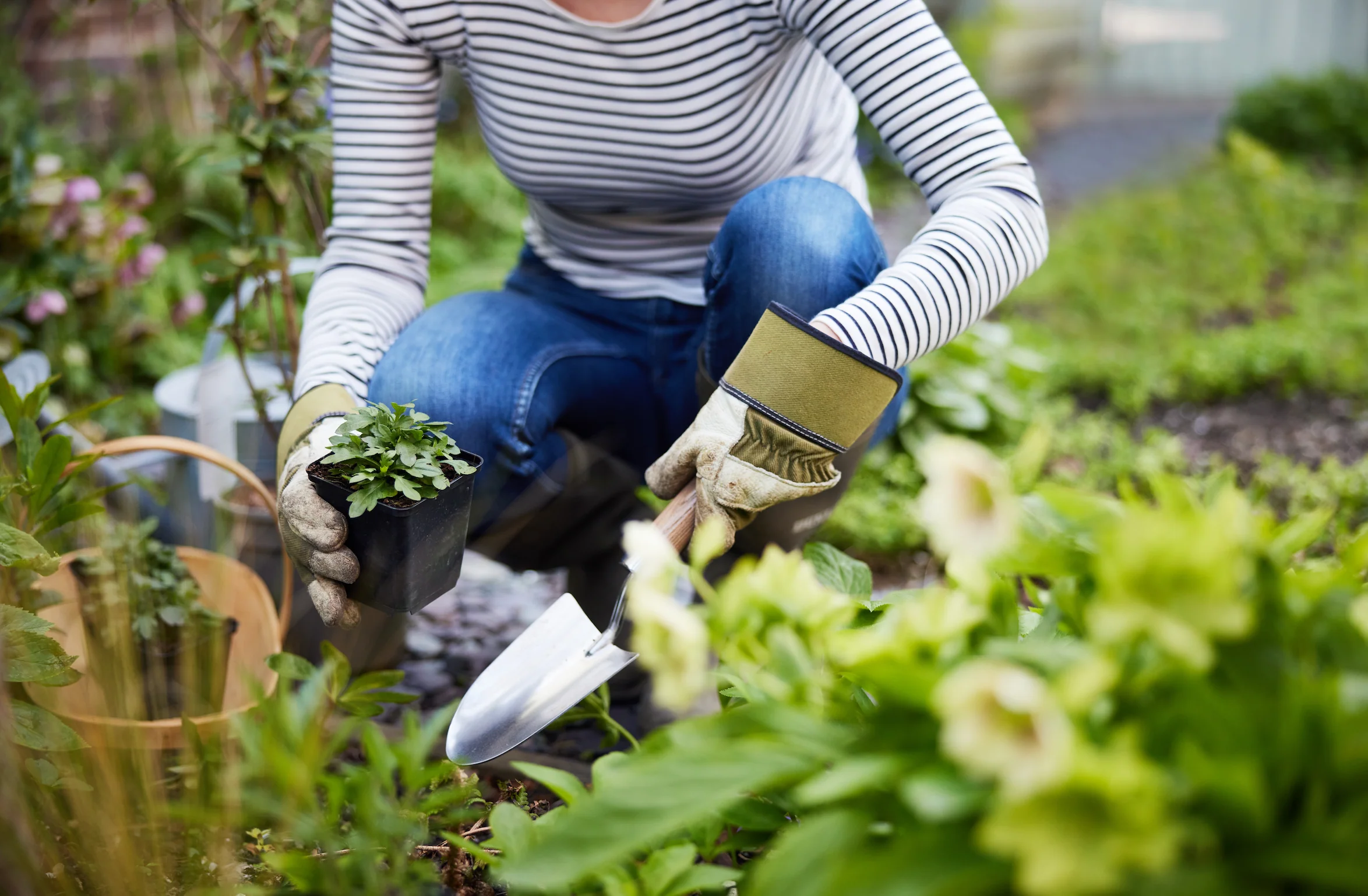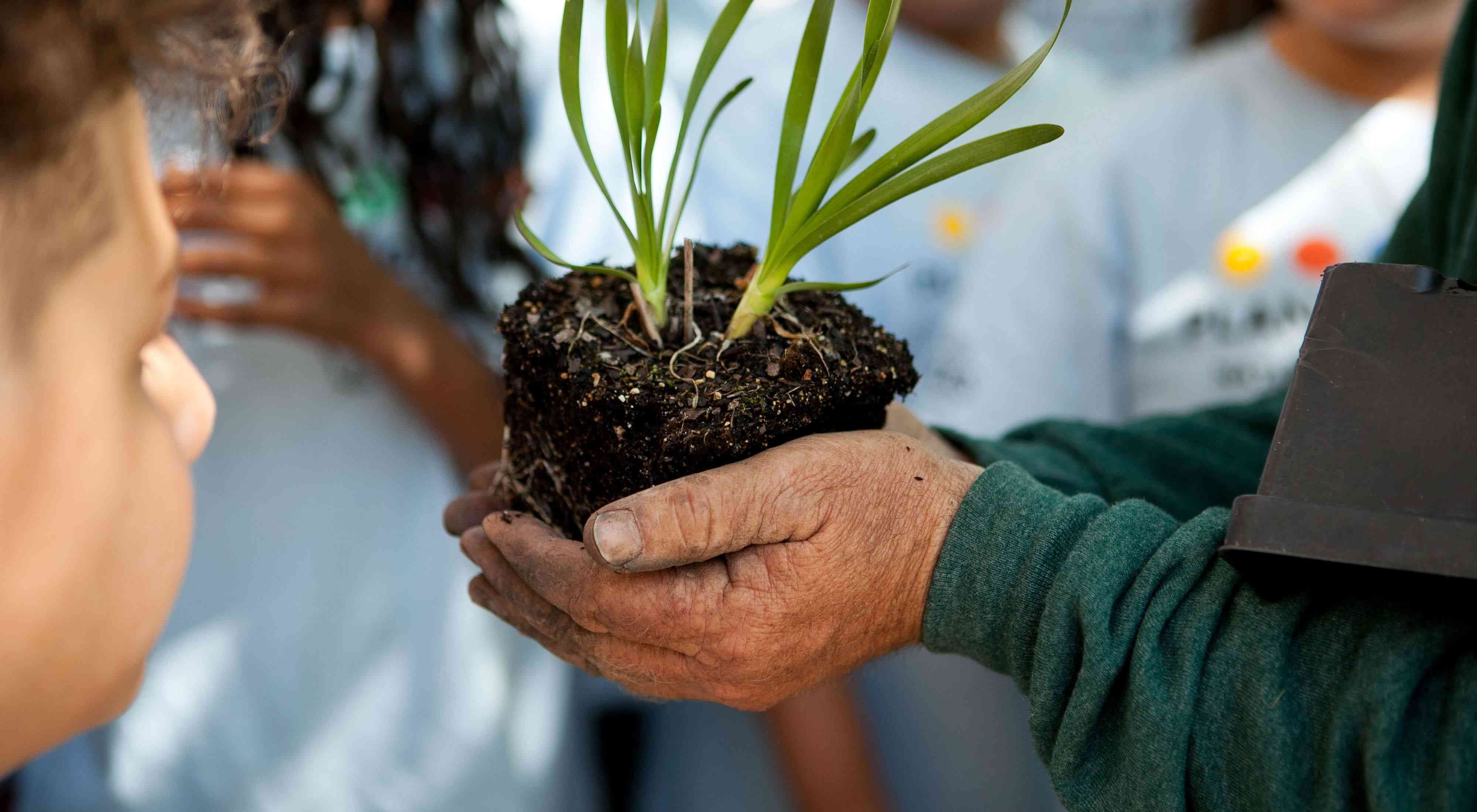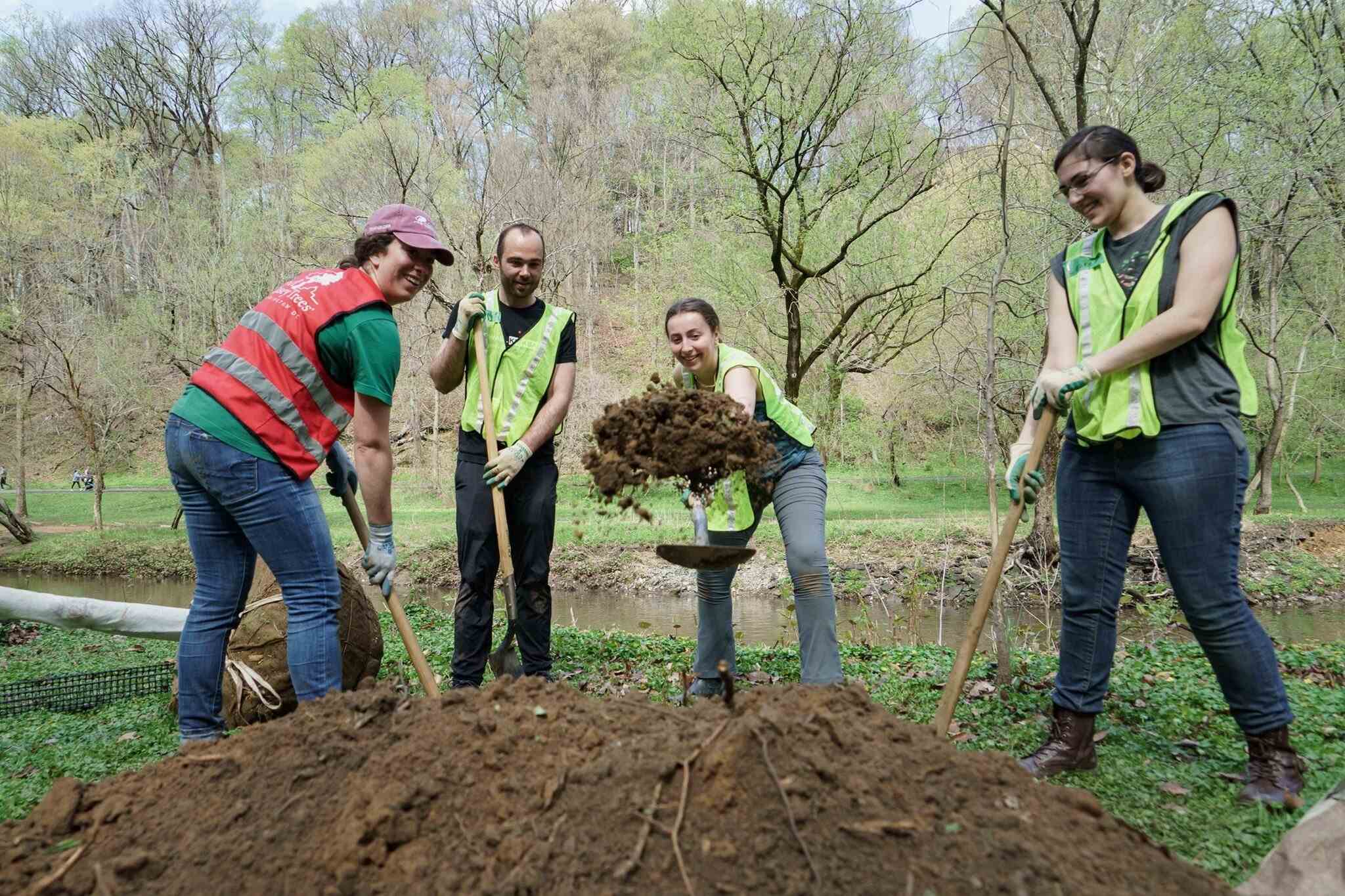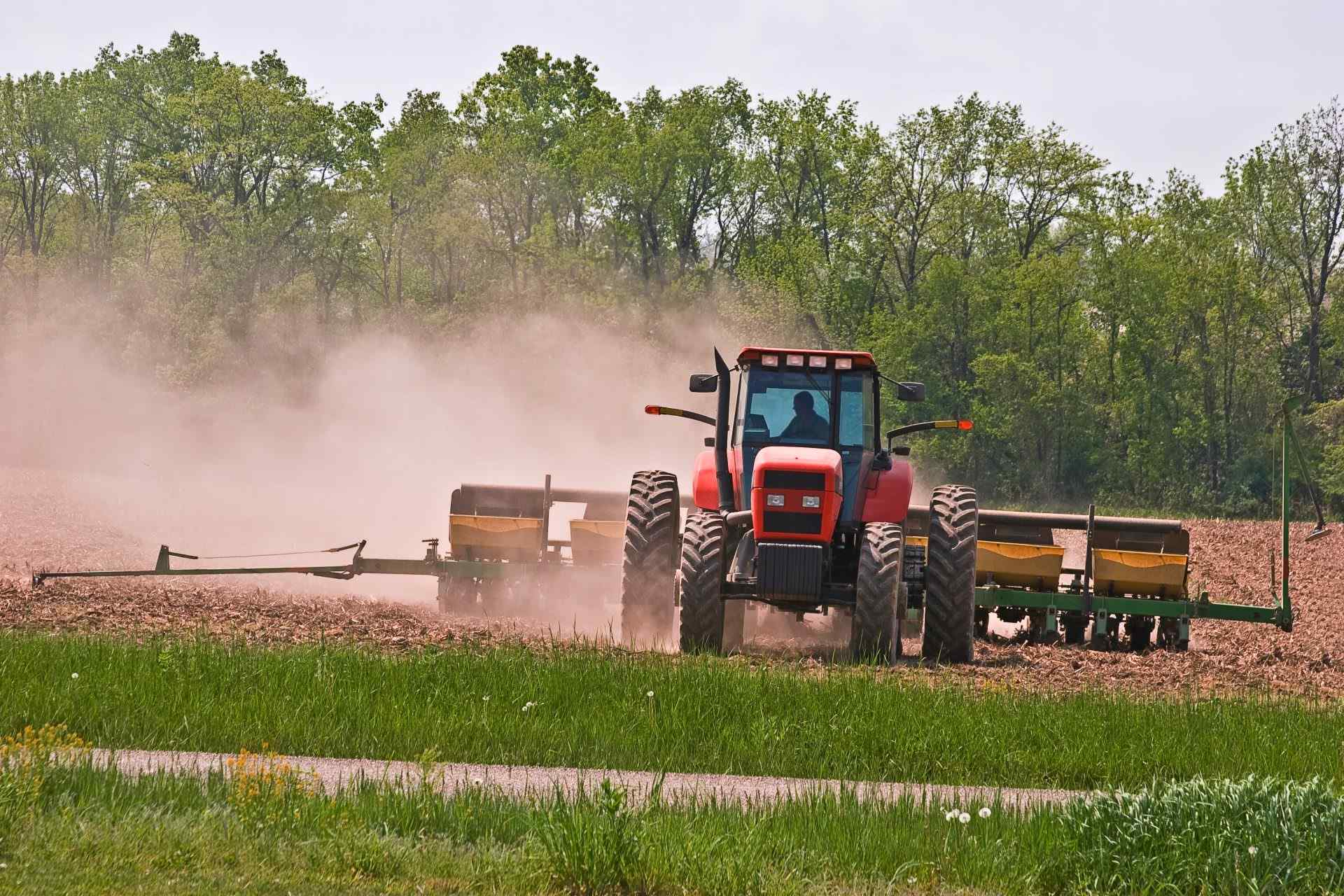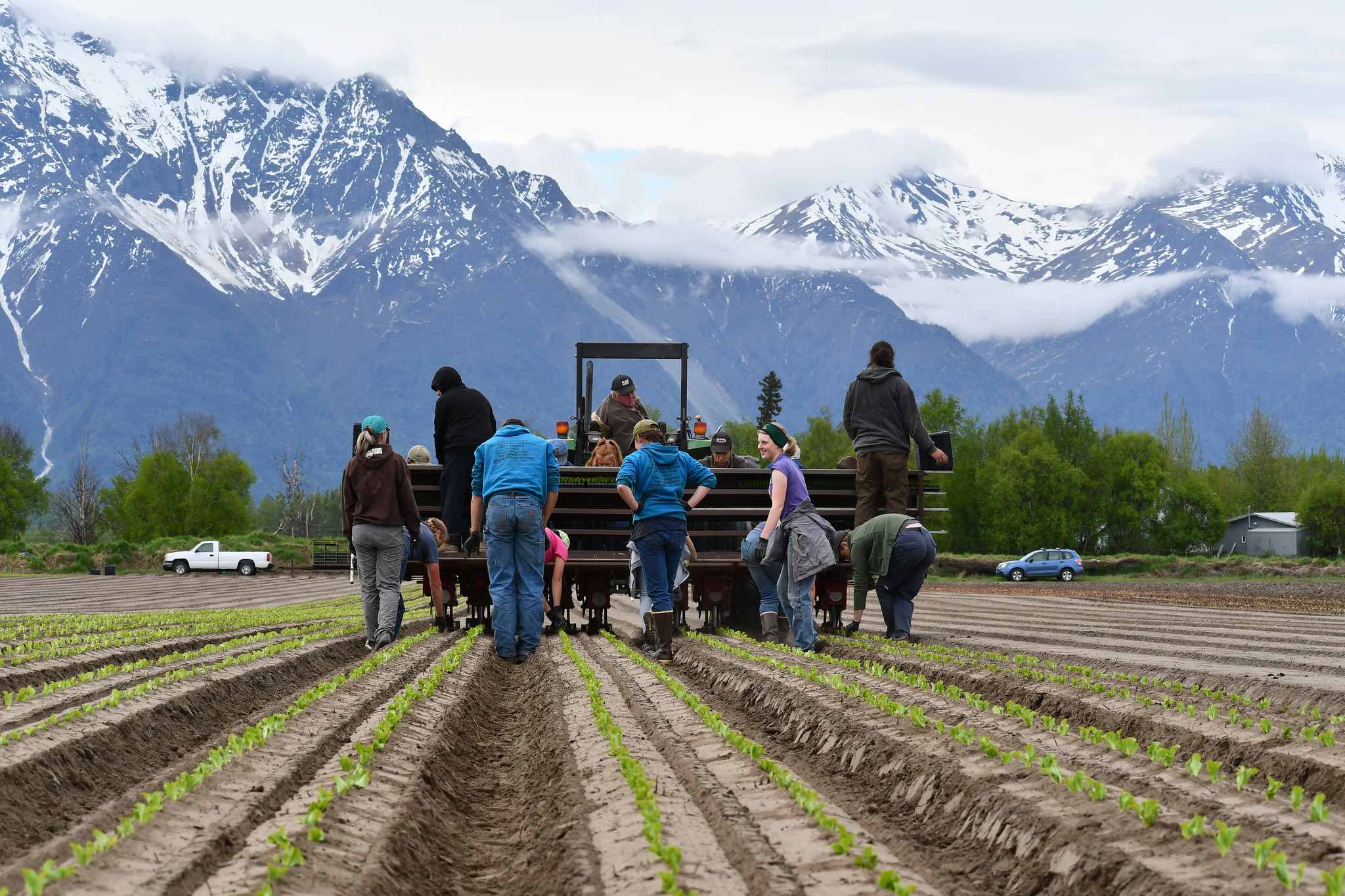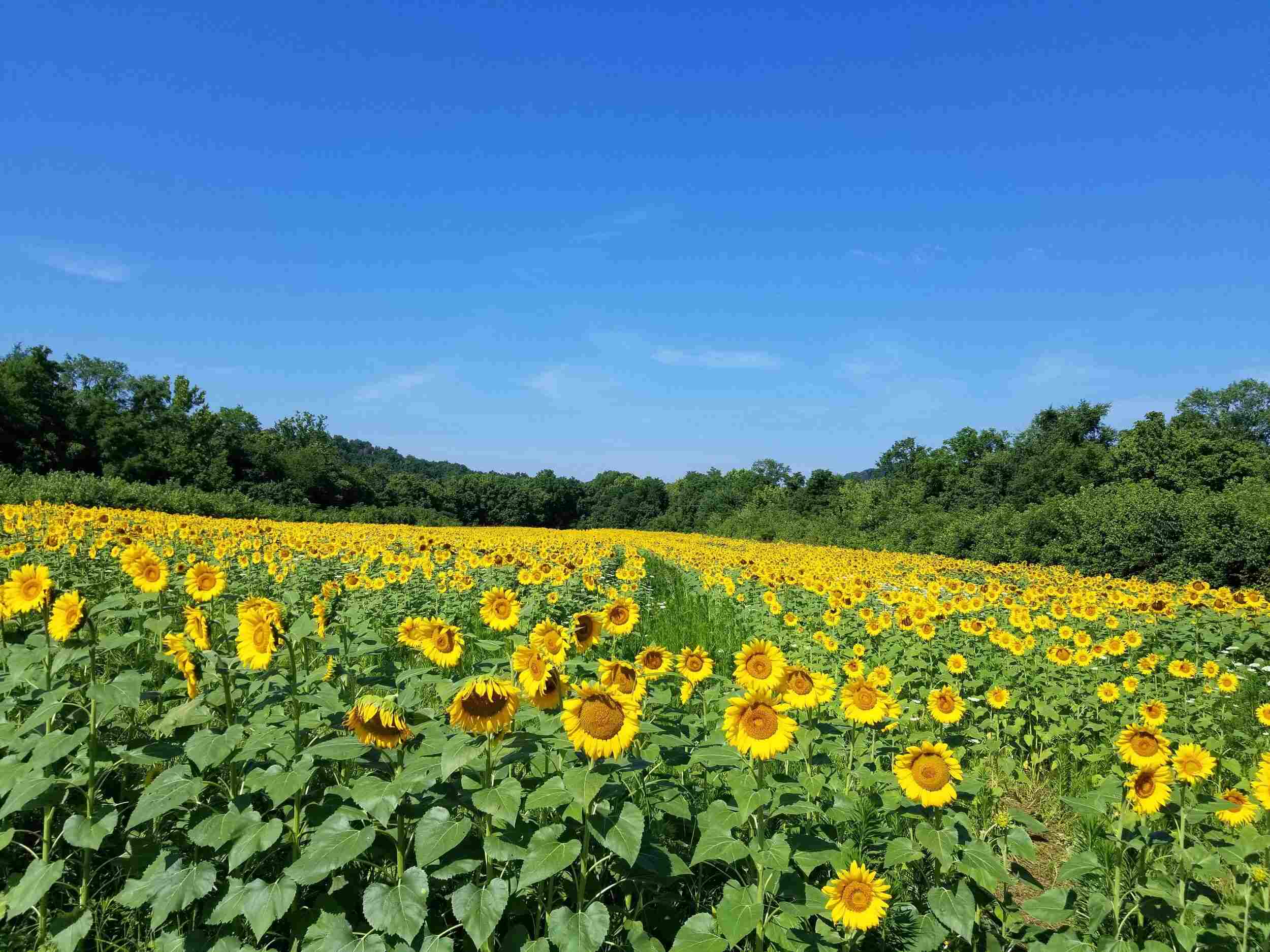Home>Gardening Basics>Understanding Soil>What Zone Is Maine For Planting


Understanding Soil
What Zone Is Maine For Planting
Modified: January 22, 2024
Learn about understanding soil and what zone is Maine for planting. Discover tips and tricks for successful gardening in Maine's unique climate and soil conditions.
(Many of the links in this article redirect to a specific reviewed product. Your purchase of these products through affiliate links helps to generate commission for Chicagolandgardening.com, at no extra cost. Learn more)
Table of Contents
Introduction
Welcome to the beautiful state of Maine, a place known for its stunning landscapes and rich natural beauty. When it comes to gardening and planting, one of the most important factors to consider is the climate and the zone in which you reside. Understanding the planting zones in Maine is essential for successful and thriving gardens.
Maine’s climate is unique and diverse, with distinct seasons and varying temperatures. The state experiences cold, snowy winters and relatively short summers, which can pose a challenge for planting and gardening. However, with the right knowledge and planning, you can still create a vibrant and flourishing garden.
In order to determine the suitability of plants for your garden, it’s important to understand the concept of hardiness zones. Hardiness zones are geographical areas that are categorized based on their average annual minimum temperature. These zones provide valuable information about the types of plants that are likely to thrive in a particular region.
Maine is divided into various planting zones, ranging from zone 3 to zone 7. Each zone has its own unique characteristics and challenges, allowing for specific types of plants to be grown successfully. By knowing which zone you are in, you can select plants that are well-suited to the climate and environmental conditions of your area.
In the following sections, we will explore the different planting zones in Maine and the specific areas within each zone. By understanding and utilizing this valuable information, you can create a garden that not only survives, but thrives in Maine’s climate.
Maine’s Climate
Maine’s climate is characterized by its unique blend of cold winters and relatively short summers. The state experiences a humid continental climate, with varying temperatures throughout the year. Understanding the climate patterns in Maine is crucial for successful gardening and planting.
Winters in Maine are known for their cold temperatures, with average lows ranging from 10°F (-12°C) to 20°F (-6°C). Snowfall is also common, with some areas receiving over 60 inches of snow annually. These cold and snowy conditions can pose challenges for plants, especially those that are not adapted to withstand harsh winter weather.
Summers in Maine are relatively short, spanning from late June to early September. During this time, temperatures can range from the mid-70s°F (24-26°C) to the low 80s°F (27-29°C). The warmer temperatures and longer daylight hours provide a window of opportunity for gardening and planting in Maine.
Maine’s climate also sees a significant amount of rainfall throughout the year. The state receives an average of 40 to 50 inches of precipitation annually, providing necessary moisture for plants to thrive. However, it’s important to note that rainfall patterns can vary across different regions of the state.
Additionally, Maine is known for its coastal influence, which can moderate temperatures in some areas. Coastal regions typically experience cooler summers and milder winters compared to inland areas. This coastal influence can have an impact on the types of plants that can be grown successfully in different parts of the state.
Overall, Maine’s climate is a unique blend of cold winters, short summers, and ample precipitation. By understanding the climate patterns in your specific region, you can make informed decisions about the types of plants that will thrive in your garden.
Hardiness Zones
Understanding hardiness zones is essential for gardeners and plant enthusiasts. Hardiness zones are areas that are categorized based on the average annual minimum temperature. These zones provide valuable information about the suitability of various plants for a specific region.
The United States Department of Agriculture (USDA) developed the hardiness zone map, which divides North America into 13 different zones. Each zone is labeled with a number that represents the average annual minimum temperature in that area. The lower the zone number, the colder the temperatures in that region.
Hardiness zones are instrumental in determining which plants are likely to thrive and survive in a particular location. It helps gardeners select plants that are adapted to the local climate and can tolerate the lowest temperatures experienced in that area.
It’s important to note that hardiness zones are not the only factor to consider when selecting plants for your garden. Soil conditions, sunlight exposure, and moisture levels are also crucial factors to take into account. However, understanding the hardiness zones provides a valuable starting point for plant selection and helps guide gardeners in making informed decisions.
Hardiness zones are not static and can change over time due to various factors such as climate change and localized microclimates. It’s important to stay updated with the latest version of the hardiness zone map to ensure accurate information when selecting plants.
When planning your garden or selecting plants for your landscape in Maine, it’s crucial to consider the hardiness zones specific to the state. These zones help you understand the minimum temperatures your plants are likely to encounter and guide you in choosing cold-hardy and suitable varieties for your gardening endeavors.
Maine’s Planting Zones
Maine is divided into several planting zones, each with its own unique characteristics and climatic conditions. These zones help gardeners determine which plants are best suited for their specific area. Let’s take a closer look at the planting zones within the state of Maine.
Zone 3: The northernmost parts of Maine, including towns such as Presque Isle and Fort Kent, fall under Zone 3. These areas experience extremely cold winters, with average minimum temperatures ranging from -40°F (-40°C) to -30°F (-34°C). It is important to select plants that can withstand these harsh winter conditions.
Zone 4: Zone 4 covers a large portion of Maine, including cities like Bangor, Waterville, and Caribou. Average minimum temperatures range from -30°F (-34°C) to -20°F (-29°C). While winters are still cold, this zone provides a wider range of plant options compared to Zone 3.
Zone 5: Cities like Portland, Lewiston, and Augusta fall under Zone 5. This zone has average minimum temperatures ranging from -20°F (-29°C) to -10°F (-23°C). Summers in Zone 5 are relatively mild, allowing for a longer growing season and a wider variety of plant choices.
Zone 6: Zone 6 covers the coastal regions of Maine, including locations like Bar Harbor and Rockland. Average minimum temperatures range from -10°F (-23°C) to 0°F (-18°C). This zone benefits from the moderating influence of the ocean, resulting in milder winters and a longer growing season compared to inland areas.
Zone 7: The southernmost parts of Maine, including Kittery and Eliot, fall under Zone 7. This zone has average minimum temperatures ranging from 0°F (-18°C) to 10°F (-12°C). Winters in Zone 7 are relatively mild, allowing for a wider range of plant choices and a longer growing season.
It’s important to consider your specific location within Maine and the corresponding planting zone when selecting plants for your garden. Different zones have different temperature ranges, which can significantly impact plant survivability. By choosing plants that are well-suited to your planting zone, you increase the likelihood of success and ensure a thriving garden.
Zone 3 Areas in Maine
In Maine, Zone 3 represents the coldest planting zone in the state. This zone covers the northernmost parts of Maine, including towns such as Presque Isle and Fort Kent. Gardeners residing in Zone 3 face extreme cold and snowy winters, which can be challenging for plant growth and survival.
The average minimum temperatures in Zone 3 range from -40°F (-40°C) to -30°F (-34°C). These frigid temperatures require gardeners to select plants that are highly cold-hardy and can withstand the harsh winter conditions.
Despite the challenges, there are still plant options available for Zone 3 areas in Maine. Some popular cold-hardy perennial flowers include Siberian iris, daylilies, and coneflowers. For shrubs, gardeners can consider varieties such as Arctic Fire dogwood and dwarf alpine currant.
When it comes to growing vegetables in Zone 3, selecting cold-tolerant varieties is essential. Crops like kale, cabbage, Brussels sprouts, and carrots can withstand the cold temperatures and provide fresh produce even in the harshest winters.
Gardeners in Zone 3 may also consider using techniques like mulching and protective coverings to provide additional insulation and protect plants from freezing temperatures and heavy snowfall.
It’s important to note that the shorter growing season in Zone 3 limits the time available for plant growth. Starting seeds indoors or using transplants can help extend the growing period and allow plants more time to mature before winter arrives.
Despite the challenges that come with gardening in Zone 3, with careful planning and selection of cold-hardy plants, it is still possible to create a beautiful and productive garden that thrives in Maine’s northernmost regions.
Zone 4 Areas in Maine
Zone 4 in Maine covers a large portion of the state, including cities like Bangor, Waterville, and Caribou. This zone offers a milder climate compared to Zone 3, but still experiences cold and snowy winters. The average minimum temperatures in Zone 4 range from -30°F (-34°C) to -20°F (-29°C).
Gardeners in Zone 4 have more options when it comes to plant selection compared to Zone 3. Many popular perennial flowers, such as peonies, black-eyed Susans, and daisies, thrive in this zone. Shrubs like American cranberrybush viburnum and red twig dogwood also do well.
Vegetable gardening in Zone 4 requires careful consideration of the frost dates. Cold-tolerant crops like lettuce, spinach, radishes, and peas can be planted early in the spring. Other heat-loving vegetables, such as tomatoes and peppers, may require protection and can be started indoors before being transplanted.
Gardeners in Zone 4 can take advantage of the relatively longer growing season compared to Zone 3. This allows for the opportunity to grow a wider range of crops and extend the time for harvesting fresh produce.
Protective measures, such as using row covers and cold frames, can help gardeners in Zone 4 extend the growing season even further. These methods provide additional insulation and protect plants from colder temperatures, allowing for an extended period of plant growth.
With careful planning and the selection of appropriate plants, gardeners in Zone 4 can create beautiful and fruitful gardens that thrive in Maine’s climate. It’s important to be aware of the specific planting and frost schedules for this zone in order to maximize productivity and optimize plant growth.
Zone 5 Areas in Maine
Zone 5 in Maine encompasses cities like Portland, Lewiston, and Augusta. This zone offers a relatively milder climate compared to Zone 4, with average minimum temperatures ranging from -20°F (-29°C) to -10°F (-23°C). Gardeners in Zone 5 enjoy a longer growing season and have a wider range of plant options available to them.
Perennial flowers that thrive in Zone 5 include tulips, daffodils, peonies, and asters. These flowers can add vibrant colors and beauty to gardens throughout the spring, summer, and fall. Shrubs such as lilacs, hydrangeas, and tree peonies also do well in this zone.
Vegetable gardening in Zone 5 provides an opportunity to grow a wide variety of crops. Cool-season vegetables like lettuce, radishes, carrots, and peas can be planted early in the spring, while warm-season vegetables like tomatoes, peppers, and cucumbers can be planted once the danger of frost has passed.
Gardeners in Zone 5 can take advantage of the longer growing season by using techniques like succession planting. This involves planting crops in stages to ensure a continuous harvest throughout the growing season.
While Zone 5 offers a favorable climate for plant growth, it’s still important to consider variations in microclimates within this zone. Factors such as proximity to bodies of water, elevation, and exposure to wind can influence the local climate and require specific plant selections for certain areas.
Gardeners in Zone 5 can also make use of methods like mulching and season extenders, such as cold frames or hoop houses, to protect plants from fluctuations in temperature and extend the growing season even further.
With its milder climate and longer growing season, Zone 5 in Maine provides ample opportunities for gardeners to cultivate thriving gardens. By selecting suitable plants and utilizing various gardening techniques, gardeners can enjoy a bountiful harvest and a beautiful landscape throughout the year.
Zone 6 Areas in Maine
Zone 6 in Maine encompasses the coastal regions of the state, including cities like Bar Harbor and Rockland. This zone benefits from the moderating influence of the ocean, resulting in milder winters and a longer growing season compared to inland areas. The average minimum temperatures in Zone 6 range from -10°F (-23°C) to 0°F (-18°C).
The milder climate of Zone 6 allows for a wider range of plant options and an extended growing season. Perennial flowers like daylilies, bee balm, and echinacea thrive in this zone. The coastal environment is also ideal for growing shrubs such as blueberry bushes, spirea, and seaside goldenrod.
Vegetable gardening in Zone 6 offers the opportunity to grow a variety of crops. Cool-season crops like lettuce, kale, and radishes can be planted early in the spring, while warm-season vegetables like tomatoes, peppers, and squash can be planted once the frost danger has passed.
Gardeners in Zone 6 can take advantage of the longer growing season by planning successive plantings and practicing crop rotation to maximize productivity. It is also important to consider the specific microclimates within Zone 6, as there may be variations in temperature and growing conditions due to factors such as proximity to the coast or elevation.
With the milder winters and longer growing season, gardeners in Zone 6 can experiment with less cold-hardy plants and enjoy a wider variety of fruits, vegetables, and flowers. However, it is still important to stay informed about frost dates and be prepared for occasional cold snaps or late-season frosts.
Gardeners in Zone 6 can capitalize on the coastal environment by taking advantage of ocean breezes, which can help deter certain pests and provide a cooling effect during hot summer days.
Whether you’re growing a flower garden, a vegetable patch, or a combination of both, Zone 6 in Maine offers favorable conditions for a successful and thriving garden. By selecting the appropriate plants and utilizing the unique coastal climate, gardeners can create stunning landscapes and enjoy the fruits of their labor throughout the extended growing season.
Zone 7 Areas in Maine
Zone 7 in Maine encompasses the southernmost parts of the state, including towns like Kittery and Eliot. It is the warmest planting zone in Maine and offers a longer growing season compared to the northern regions. The average minimum temperatures in Zone 7 range from 0°F (-18°C) to 10°F (-12°C).
The milder climate of Zone 7 provides a favorable environment for a wide range of plants. Perennial flowers such as roses, lavender, and peonies thrive in this zone. Shrubs like butterfly bush, hydrangea, and oleander can also be grown successfully.
Vegetable gardening in Zone 7 allows for an extended growing season and the opportunity to grow a variety of crops. Cool-season vegetables like lettuce, spinach, and kale can be planted early in the spring, while warm-season vegetables like tomatoes, peppers, and eggplants can be grown for a longer period.
In Zone 7 areas, gardeners have the option of growing certain crops that may not be suitable for colder zones in Maine. Herbs like basil, oregano, and rosemary can be grown as perennial plants rather than annuals. Fruits like figs, grapes, and even some citrus trees can be cultivated with proper care and protection during colder months.
It is important to consider the specific microclimates within Zone 7, as certain areas may have variations in temperature and growing conditions due to factors such as elevation, exposure, and proximity to the coast.
Gardeners in Zone 7 can take advantage of the longer growing season by succession planting and utilizing techniques such as crop rotation and companion planting to maximize productivity and minimize pest issues. It is also important to monitor and adjust watering practices during hotter periods to ensure plants receive adequate moisture.
With its milder winters and longer growing season, Zone 7 in Maine offers ample opportunities for gardeners to experiment with a wide range of plants and enjoy a diverse and thriving garden throughout the year. By taking advantage of the favorable climate and selecting appropriate plants, gardeners can create beautiful landscapes and enjoy a bountiful harvest.
Conclusion
Understanding the planting zones in Maine is crucial for successful gardening and plant selection. Maine’s climate offers a unique blend of cold winters, relatively short summers, and ample precipitation, creating both challenges and opportunities for gardeners.
By knowing your specific planting zone, you can choose plants that are well-suited to the climatic conditions of your area. Zones 3 and 4 in northern Maine experience the coldest temperatures, requiring cold-hardy plants and special protective measures. Zone 5 offers a milder climate and a longer growing season, allowing for a wider range of plant options. Zone 6 benefits from coastal influences, resulting in shorter and milder winters, while Zone 7 in the southern parts of Maine offers an extended growing season and opportunities to grow more tropical or heat-loving plants.
Within each planting zone, it’s important to consider microclimates that may exist due to factors such as elevation, exposure, and proximity to bodies of water. These factors can influence temperature fluctuations and growing conditions, requiring thoughtful plant selection and specific gardening techniques.
As you plan your garden and select plants for Maine’s diverse climate, remember to consider the specific needs of each plant, such as soil conditions, sunlight exposure, and moisture levels. Incorporating organic matter into the soil, providing adequate watering, and practicing proper plant care will help ensure the health and vitality of your garden.
By combining knowledge of your planting zone with gardening techniques and plant selection, you can create a thriving and beautiful garden that enhances the natural beauty of Maine. Embrace the unique challenges and opportunities that Maine’s climate offers and enjoy the joy and satisfaction of growing plants in this picturesque state.

